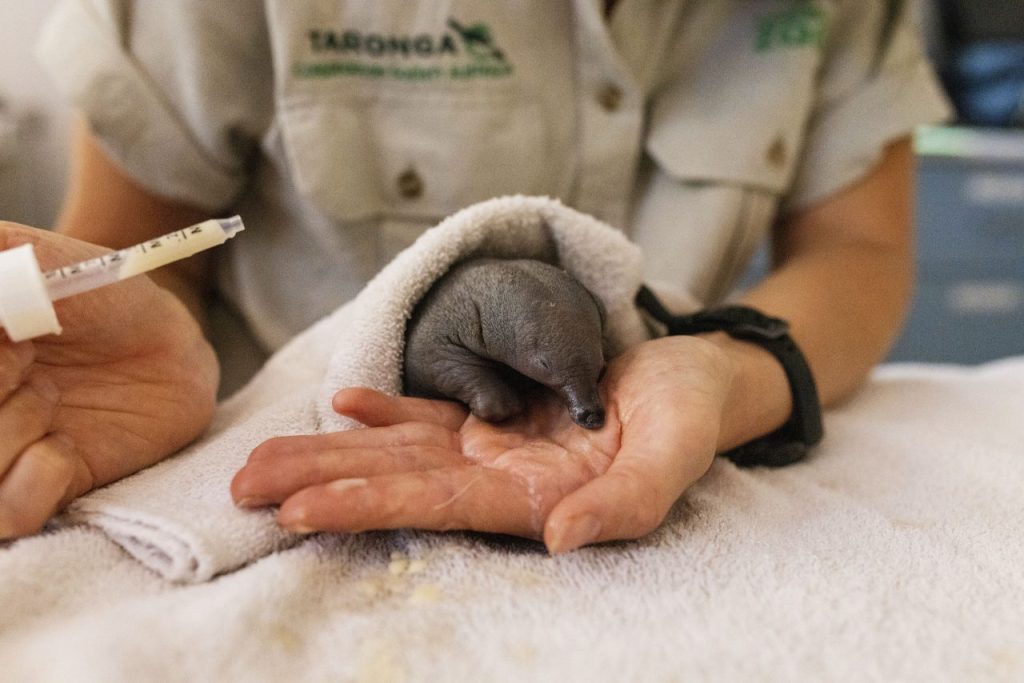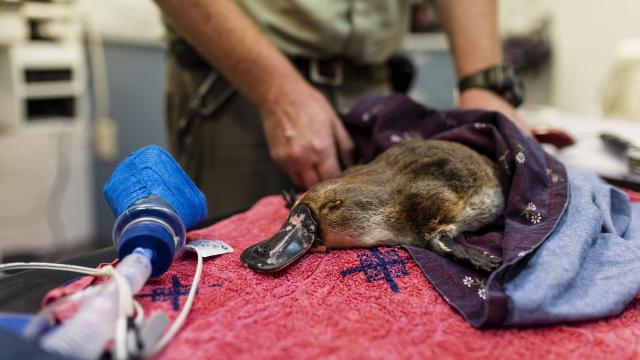The Easter holidays are fast approaching, which means that road trips are likely on the way. And a sad reality is that for some of you, an encounter with injured animals may be an unfortunate part of your journey.
While we absolutely hope that is not the case, it’s worth knowing what to do in a situation if you do see injured wildlife (whether that’s on a road trip or just in everyday life). So, with that considered, we got some advice from Liz Arthur, a Sydney Unit Supervisor at the Taronga Wildlife Hospital.
Here’s what you should do if you come across injured wildlife in Australia.
What to do if you find injured wildlife

“Loss of habitat and human activity are threats to our unique animals, so we all need to work together to secure a shared future for wildlife and people,” Arthur explained over email.
So, in the case that you do see an injured animal, there are nine tips she suggests keeping in mind.
Be prepared
If you’re planning for a road trip, or are simply driving around an area where there is a chance you might encounter injured wildlife, Arthur shared it’s important you get prepared ahead of time.
“You never know when you’re going to come across injured wildlife, so preparation is key,” she said.
“Keep some clean cotton towels (without any loose threads), a pair of thick gardening gloves and a cardboard box in your car at all times. This will help you to safely pick up the animal and transport it to a wildlife hospital.”
Put your own safety first
Please keep this in mind at all times. You should never risk your own safety when attempting to help injured animals. You can always call in specialists, like WIRES, to help take over if you do not feel comfortable.
Arthur shared that you should “Consider your own safety when approaching wildlife that may be injured, especially if you are stopping on a busy road, or if the animal is impacted during a bushfire or flood crisis. Only attempt to rescue animals if it is safe to do so, and contact emergency services if you need assistance.”
Be aware and observe
Okay, so if you’re in a safe environment and feel comfortable accessing the situation at hand, Arthur shared that the next step is to pay close attention to the circumstances of the animal’s injury.
“Take note of the location the animal was found and the situation it was in, including any important details and observations to note, such as if it was hit by a car, injured by a dog or cat (etc.).
“These observations are very helpful to the vets and nurses examining the animal on arrival at the hospital and can aid in its treatment and assist the team when it comes the time to release it back to the wild,” she shared.
Handle with care
In some cases, you may need to transport the animal (please check out the next point in this list before you decide to do so, though).
Again, ensure your safety first and if you need assistance please call for support from experts.
Arthur explained, “An animal may be semi-conscious and may rouse when you touch it. To protect yourself, wear gloves or use a towel or T-shirt to pick it up.”
Exercise caution
Irrespective of the above, do not touch dangerous animals. If you are unsure, call for help.
“Avoid handling potentially dangerous animals, such as snakes, or animals that carry infectious diseases, like grey-headed flying foxes – these animals should only be handled by trained wildlife rescuers,” Arthur shared.
Transport
“Transporting animals, even short distances, can be very stressful for them. Help them stay calm by placing them in a cardboard box lined with soft towels. The box should be well-ventilated, with air holes in its sides,” Arthur shared.
“If you find more than one animal, keep them in separate boxes. Place the box on the back seat with lots of space around it, away from other passengers. If the weather is cold, keep the car warm and quiet – turn off the music, try not to talk loudly and leave your pets at home.”
Seek veterinary care as soon as possible
One of the most important steps in caring for injured wildlife is getting them the right care as quickly as possible. That is not your role; it’s a job for a vet.
“It is essential that the animal gets assessed by a veterinarian as soon as possible,” Arthur shared.
“Do not attempt to treat the animal yourself and do not apply cream or ointments to injuries. Take the animal to a wildlife hospital, such as Taronga Wildlife Hospital in Sydney or Dubbo, or contact a local Wildlife Rescue group, or your local vet as quickly as you can.
“If you cannot take it to a wildlife hospital immediately, keep it in a warm, quiet and dark place in your home – off the floor – and do not disturb it.”
Keep your distance
“Although they look cute, it’s important to remember native wildlife are not pets,” Arthur stressed.
“They are not used to human interaction. They will be stressed by being handled and do not know you are helping them.”
She also stressed that it’s important to keep pets away from wild animals, too.
Do not offer the animal any food
You may be trying to help, but please do not feed wild animals. Especially if they are unwell.
“Providing food for free-living native wildlife is generally not recommended as it can lead to serious, unintended harm,” Arthur shared.
“Additionally, if any animal needs treatment under anaesthetic, it will need to have an empty stomach. If you must keep the animal overnight, you can leave a small shallow dish of water in its box but don’t force it to drink.”

Leave a Reply
You must be logged in to post a comment.